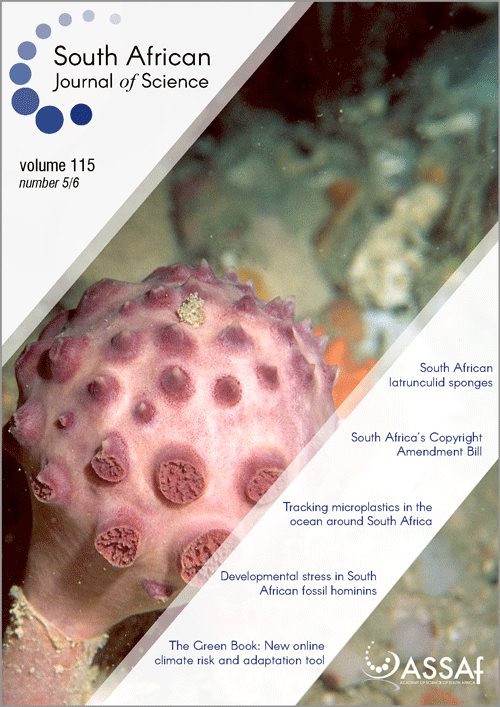The ecosystem of e-learning model for higher education
DOI:
https://doi.org/10.17159/sajs.2019/5808Keywords:
academic development, physics education, Sakai, digital habitat, learning technologiesAbstract
We present the ecosystem of e-learning (EeL) model, which can be applied to any higher education context, and which takes full account of all inhabitants and their interrelationships, not only the components, of the e-learning food chain. Specifically, this model was applied to our context within the University of the Western Cape, highlighting the role of the academic developer within the model. A key argument advanced in this paper is that academic developers should work to reduce complexities associated with emerging e-tools. The EeL model is used to emphasise the role of academic developers as mediators between components and relationships.
Significance:
- By the application of the EeL model, it is demonstrated that the use of e-tools and their alignment with pedagogies within any context must be sensitive to the entire ecosystem, with the recognition that this is simultaneously a top-down and a bottom-up process.
- The student must be the core focus in the adoption of emerging technologies and the learning process, but simultaneously the student can only be in focus when they are placed within their broader ecosystem – including the societal level.
- Our findings add to the debate on physics education specifically, and more broadly by providing new ways of conceptualising an e-learning ecosystem.
- It is advocated that an academic developer-mediator should step in to mediate between academics, tutors and emerging e-tools, through a structured developmental process for learning and teaching.
- The EeL model can afford an insight into the processes involved when incorporating a learning management system (and emerging e-tools) into learning and teaching in higher education institutions.
Published
Issue
Section
License

All articles are published under a Creative Commons Attribution 4.0 International Licence
Copyright is retained by the authors. Readers are welcome to reproduce, share and adapt the content without permission provided the source is attributed.
Disclaimer: The publisher and editors accept no responsibility for statements made by the authors
How to Cite
- Abstract 1496
- PDF 1626
- EPUB 224
- XML 429












.png)